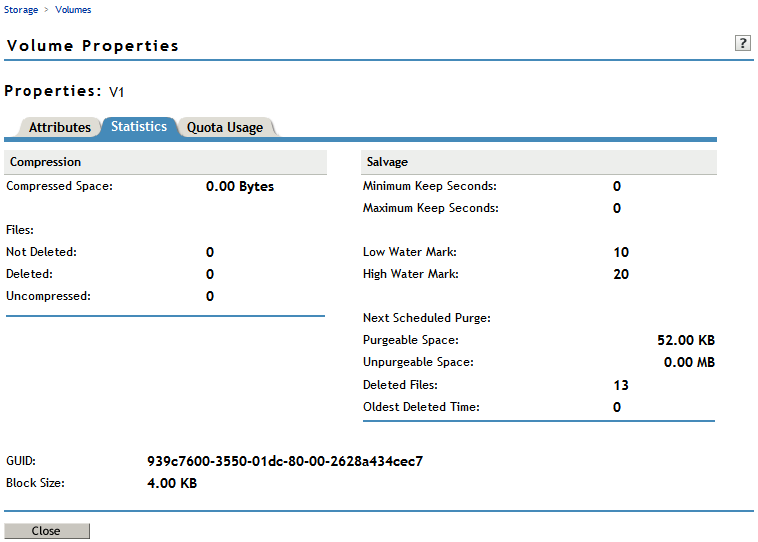32.2 Monitoring Compression and Salvage Statistics
For each volume, the page in iManager reports statistics about the compressed and salvageable files in the volume, the GUID of the volume, and the block size being used.
-
In iManager, click .
For instructions, see Section 9.1.3, Accessing Roles and Tasks in iManager.
-
Select a server to manage.
For instructions, see Section 9.1.4, Selecting a Server to Manage.
-
In the list, select a volume that you want manage.
-
Click .
The page has three tabs: , , and . It opens by default to the tab.
-
Click the tab to view the compression and salvage statistics for the selected volume.

If the compression attribute is set, the Compression report shows statistics of all the compressed files for the selected volume.
If the Salvage Files attribute is enabled, the Salvage report shows statistics about deleted files that have not yet been purged.
Other information reported includes the volume’s GUID and block size.